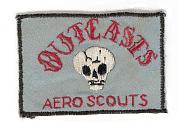One thing I would point out, at least with respect to U.S. military writing, is that much of what was done officially between 1800 and 1900 was concerned with what was then called "tactics" but what we would now most likely call drill. There wasn't much official writing concerning military theory (aside from fortification theory, which could get pretty bloody exotic), and you really didn't see much of that until the expansions that took place in the build-up to World War I.
Why the change? There are, I think, a number of reasons. One may lie in the breakup of more or less static regiments and the increased reliance on a conscript army in time of war. It was then that you saw the confusing and jumbled field manuals (which oddly enough resemble some of the privately-published products pushed on unsuspecting State Volunteer units during the Civil War). And a great deal of the older stuff could be considered "arch-twaddle." Theory wasn't in vogue, and there was often some suspicion attached to an officer who wrote (again, I'm talking about the U.S. here in the period before World War I).
I would as an aside wonder how much the influence of the "business school" movement in the 1950s had to do with the twaddle that shows up in our manuals?
And now back to your regularly-scheduled thread....







Bookmarks